When I looked out of the window this morning I was greeted by a dull, grey day. My spirits immediately lifted – what a perfect time for an overcast birds-in-flight test with my Nikon 1 V3!
NOTE: Click on images to enlarge.
To put this article and the test in context here’s a photograph of Hamilton harbour during the morning that I did this birds-in-flight test.

This was far from ideal weather to photograph birds-in-flight, especially with a mirror-less camera, but a great day to test the auto-focusing capability of my Nikon 1 V3.

I did take a few still images to get used to the controls of the V3 as I haven’t shot with this model for well over a year.
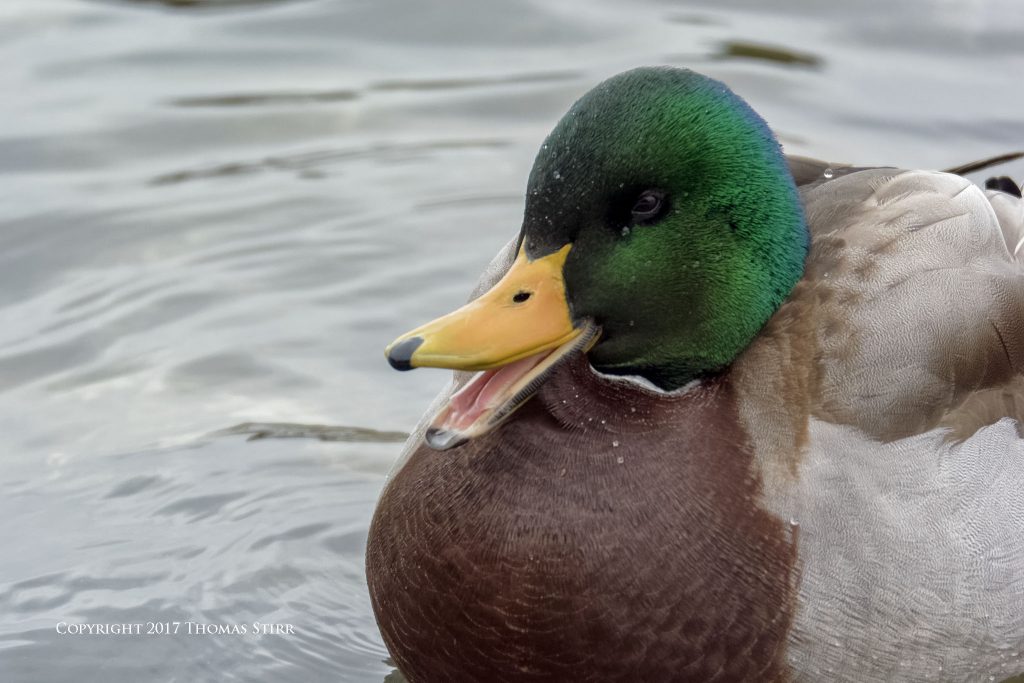
With my Nikon 1 V2 I often shoot birds-in-flight using Manual settings and letting my ISO float with the Auto ISO160-3200 setting. Since I wasn’t sure how the V3 would behave, I decided to play it safe and shoot in Shutter Priority mode, with floating ISO.
In the case of the V3 I used Auto ISO 160-6400. I did this because there is about a 2/5th of a stop difference between the measured ISO performance of the V2 and V3. For example, when shooting at an ISO-3200 camera setting the V2 shoots at measured ISO-2416, wheres the V3 shoots at measured ISO-1750. At a stated ISO-6400 the V2 shots at a measured ISO-4973 compared to ISO-3576 with the V3. I wanted to make sure that the V3 wouldn’t ‘top out’ early on ISO.

Capturing groups of birds did not present any issues, even under the overcast conditions.

I knew the real challenge would be with individual birds so I tried a range of metering modes: spot, centre-weighted, and matrix, to see which would produce the best results under the difficult conditions.
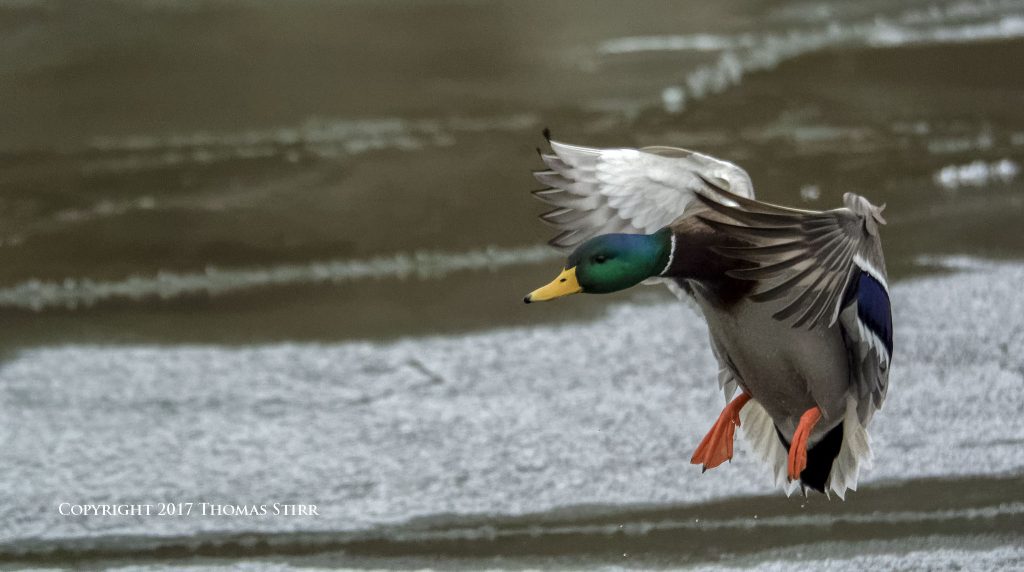
Almost all of the images in this article were taken with matrix metering as I found this mode produced the most ‘keepers’.

I used AF-C with subject tracking for all of the birds-in-flight images. Some photographs were captured as part of an AF-C run at 20 fps, while others were taken as single images.
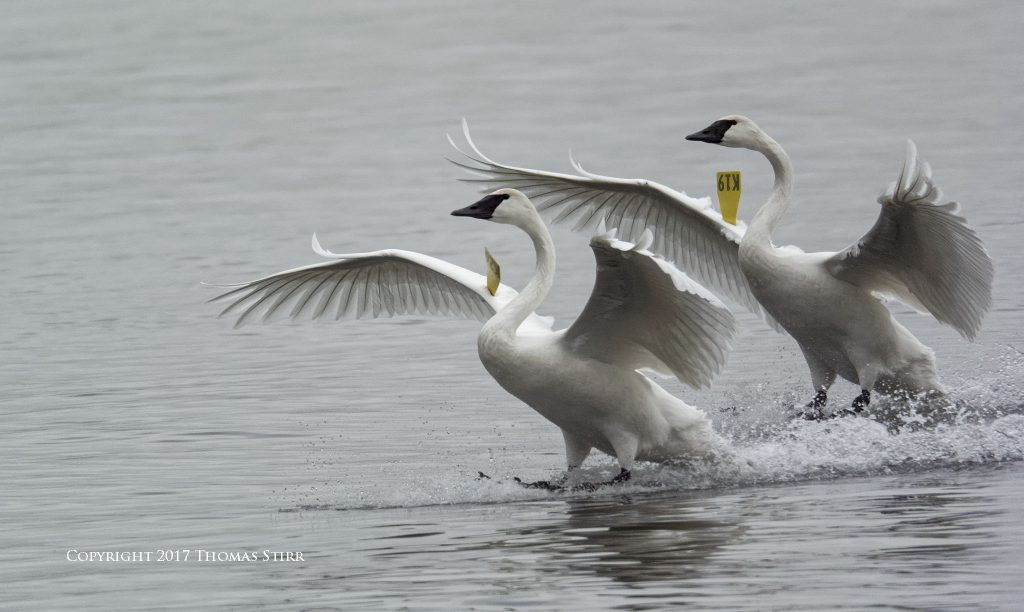
Two of my best images were taken as single captures while a pair of swans were landing on the water at LaSalle Park in Burlington.

My Nikon 1 V3 was able to focus quickly enough to get the images you see above in a back-to-back sequence.

The Nikon 1 V3 did struggle quite a bit more in these overcast conditions than does my V2… and noticeably so. I missed quite a few image opportunities simply because the V3 would not acquire any focus at all. It would just hunt in vain. I haven’t had this happen with any of my V2s.
Although I didn’t keep any notes, this seemed to be a bit more prevalent when trying to use spot or centre-weighted metering. When I did my review of the V3 I did notice that the camera’s AF performance under low light was not as quick as the V2.

I often use both spot metering and centre-weighted metering when shooting birds-in-flight under more favourable weather conditions. It would appear that matrix metering works a bit better in overcast conditions than the other metering options with the V3. If I knew that I was going to be shooting under these conditions and needed some keeper images, I’d likely use my V2 instead of the V3.
Realistically I’ll be using my Nikon 1 V3 for all of my birds-in-flight and nature photography. I typically only go out to shoot these types of images in decent to good lighting conditions. From a practical standpoint the weaker auto-focus of the V3 under overcast conditions isn’t something that I’m likely to face.

I had a couple of instances where the V3 would lose focus right in the middle of an AF-C run at 20 fps. This was immediately noticeable through the EVF as the image would simply drop out to a blur. This happened when I was attempting to capture swans in-flight against the dull, grey surface of the water. I’m sure the lack of contrast in the scene was the cause.

I wasn’t expecting to get many usable images from this morning’s test. While I burned through a lot of shutter clicks with unusable AF-C runs at 20 fps or subjects that were just too small in the frame to use for this article, I did get some decent captures.

Unless I was doing this test with the Nikon 1 V3 I would have never gone out to capture birds-in-flight images under these types of conditions. So, for me at least, this wasn’t a ‘real world’ test as much as it was pushing the V3 towards its auto-focusing limits to see what it would do.

I found that keeping the AF-C pre-focused by pointing it out on the water about 25 meters (~81 feet) in front of me and tapping the shutter lightly between images helped the V3 acquire focus when birds approached. As is always the case it was helpful to pick up birds at a distance, then track them with the V3 until they came within shooting range.
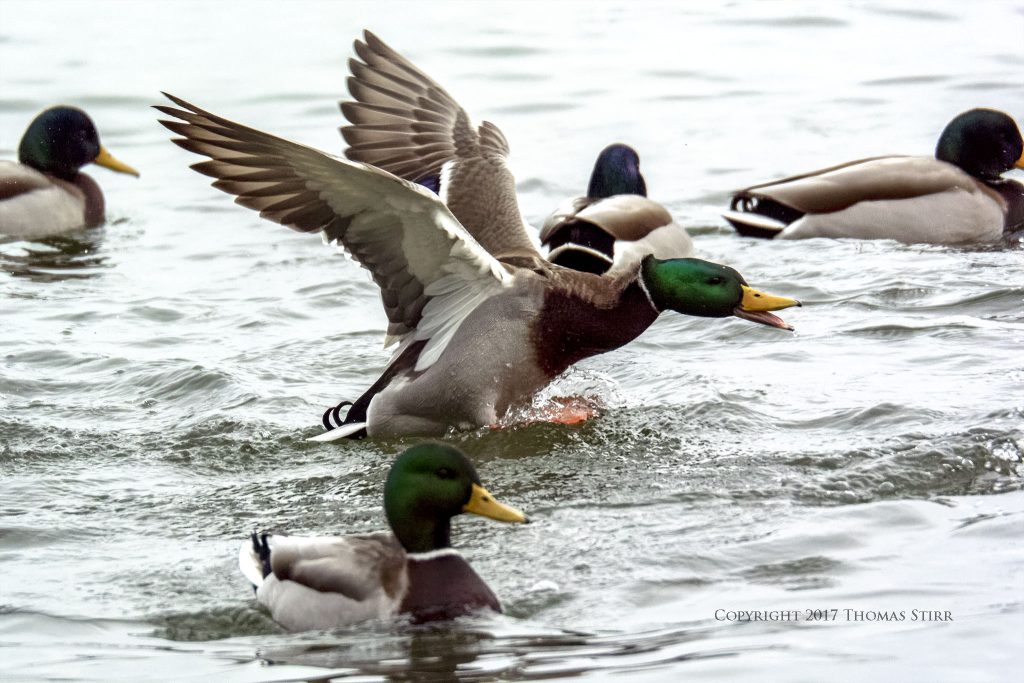
The Nikon 1 V3 did a credible job keeping locked onto a subject even when the bird was in traffic.
Mirrorless cameras often struggle under dull lighting conditions. While the Nikon 1 V3 wasn’t stellar in terms of its auto-focusing performance, it was decent. I will be doing another birds-in-flight test under sunny conditions when the weather cooperates and my schedule allows.

It should be noted that I took close to 2,000 images this morning during a 3 hour period and used two batteries, both down to one bar remaining. I likely could have stretched the number of images further, but I used the rear screen to check and delete many images which used up some battery life.
If you enjoyed this article and would like to learn more about the Nikon 1 system, you may want to have a look at our eBook, The Little Camera That Could. It illustrates the capability of the Nikon 1 system through hundreds of original photographs. There is also commentary and tips about the Nikon 1 system.
My intent is to keep this photography blog advertising free. If you enjoyed this article and/or my website and would like to make a modest $10 donation through PayPal to support my work it would be most appreciated. You can use the Donate button below. Larger donations can be made to tom@tomstirr.com through PayPal.
Article and all images are Copyright 2017 Thomas Stirr. All rights reserved. No use, duplication or adaptation of any kind is allowed without written consent. If you see this article reproduced anywhere else it is an unauthorized and illegal use.

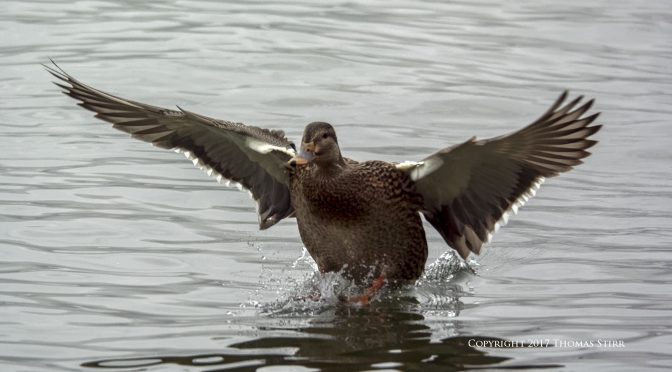

A few ?s if you have time after reading a ton of your posts I am on the fence on what I want to buy.
I had a J5 and sold it back when it first come out as I did not like not having a viewfinder but now I want another 1 camera for the extra zoom.
If you could only have one would it be the V2, V3 or the J5?
It seems you like the V2 a lot but I was not sure how much you like the V2 VS the J5 for image quality and for video work as I do need to shoot some video as well for websites I design.
I have spent a lot of time looking at image from the cameras in Flicker and it seems that the V2 images are much sharper looking then the V3 and J5 over all.
How is the noise at say 1600 on the V2 VS the J5?
I loved the J5 colors can the V2 match that with clean shadows areas?
Dose the J5 focus as well as the V2 in low light or not great light.
Love your pick of the 3 lens I will be buying the CX 70-300 and maybe the 10-100 but on the 6.7 I would love that to but I am going to wait and see if the rumors are right for the DL 18-50 coming out in March at 1.8 to 2.8 that looks like a winner over the 6.7 lens for low light shooting.
Thanks
Hi Edward,
Your comment is quite timely as I have just published a new article “Factors when considering a Nikon 1 Body”. You may wish to have a look at that new posting. I’ll do my best to answer your specific questions as best I can for you.
1) If I could only have one camera, choosing between the V2, V3 or J5 which would I choose?
Since I use each of the bodies for very different things this answer is not clear cut. In terms of doing client video projects I would choose the V2. My second choice would be the V3 and my last choice would be the J5. I would rule out the J5 since it does not accept external mics or other accessories, nor does it seem to have the amount of video controls I need. I’d pick the V2 probably since I am most familiar with it. I haven’t shot any video with the V3 yet so it is hard to tell if it would supplant the V2 once I became more familiar with it. Since I often shoot client videos with multiple cameras recording at the same time my trio of V2s is ideal for my current client video needs.
For birds-in-flight and other nature photography I would choose the V3 mainly for the extra resolution, absence of a low pass filter and the added external controls. Second choice is the V2. J5 wouldn’t even enter the picture if I wanted a camera to handle a steady diet of birds-in-flight.
For all other general photography such as travel, landscape, flowers, street, and close up work the extension tubes the J5 wins hands down. An important factor here is that I very quickly became accustomed to not needing an EVF for these types of photography.
2) V2 video quality? It is actually very good as long as shooting in 1080 at 30p is all you need, which is my requirement. In terms of video noise I found the V2 was on par with my D800 up to ISO-800 which is the maximum at which I shoot. If you are going to use the V2 for video I would strongly recommend buying the three Nikon 1 primes and the 10-100mm f/4.5-5.6 PD zoom. I rarely use any other lenses for my video work. I was out shooting a client video project yesterday and only used those four lenses all day. J5 video in Auto for casual holiday clips seems to work fine. I’ve not done video work with the V3 yet so I can’t comment on that. Another factor using a Nikon 1 body like the V2 for video is the amount of depth of field you need in your clips. I only work with industrial clients and I virtually never need shallow depth of field so using a sensor with a 2.7X crop factor is perfect for my needs.
3) Sharpness of V2, V3 and J5 images. All cameras can produce good results when shooting in RAW and doing some work in post. From my experience it is a pretty close call. Personally for general photography I much prefer J5 files because of the better dynamic range and colour depth. To my eye, RAW files from both the V3 and J5 are a bit sharper than the V2…likely due to the absence of a low pass filter.
4) Image noise of V2, V3 and J5? Not much difference at all when shooting in RAW and using PRIME noise reduction in OpticsPro 11. V3 is slightly weaker than the other two bodies in this regard. I have no hesitation shooting most subjects up to ISO-3200 with any of my Nikon 1 bodies. You can see a lot of samples if you check out various articles and the EXIF data on images.
5) Colour depth and dynamic range performance of J5 and V2? J5 wins hands down, especially when shot at base ISO. I have found it is better to ‘thicken up’ the highlights of a Nikon 1 file than to mess around digging in the shadows for most images.
6) J5 versus V2 focus in lower light? V2 wins over both the J5 and V3 which both hunt a bit more in lower light conditions. I can normally still get my shots but there tends to be a noticeable lag with the V3 and also J5.
I can’t really comment on the DLs as that line up of fixed lens cameras is of no interest to me at all.
Tom
Hi Thomas,
You mention the difference between the ISO values, those on the dial and those as being “as measured”, can you tell me how you measure the ISO of each image?
Sorry if this has been dealt with before but I’m just new to your site and subscription list. I’m sorry that I’m so late arriving but I’m really happy now that I’m here,
Bruce
Hi Bruce,
The differences between manufacturer-stated and measured ISO come from DxO test data. If you go to the DxO website and look at the camera sensor performance data you can look up a wide range of different cameras. Here is a link to the measured vs manufacturer-stated data on the V3: https://www.dxomark.com/Cameras/Nikon/1-V3—Measurements and here is a link for the V2: https://www.dxomark.com/Cameras/Nikon/1-V2—Measurements. If you mouse over the various manufacturer-stated ISO values the DxO measured ISO will be shown.
When I bought my first Nikon 1 V2 I compared the measured ISO for that model against the Nikon D800 to see how close the two cameras performed. What I discovered was that the measured ISO was basically the same. This was great for my video business as I wanted to start shooting scenes with multiple cameras to add production value for my clients. Since I typically shoot client videos at a maximum of ISO-800 using all manual camera settings it was important to me that the different models performed as close to identically as possible because if they didn’t then I would need to do exposure correction in post.
From a practical standpoint if someone is using one camera independently of the other gear they own the differences between manufacturer-stated vs. measured ISO isn’t an issue. Since I often shoot a video scene using multiple cameras from different angles having them exposure a scene identically when using all Manual settings is important as it saves me time in post production.
I first noticed the difference in measured ISO between the V2 and V3 when I was doing a review of the V3 and doing some test images at Bird Kingdom. I noticed the the V3 would consistently under expose images when compared to my V2s when shot at identical camera settings. As I began to use my V2 more extensively for my client videos I bought additional V2 bodies to help ensure that I would not need to do adjust exposure in post. At the time I was considering selling my D800 and all of my FX glass as I could no longer justify the investment I had tied up in that gear from a business perspective given my declining use of it.
Hope this has helped…
Tom
These are a delight to watch!
Nikon should send you a few cameras because – from where I’m standing – you’re so active that you deserve an ‘ambassador’ position …lol
I’m glad you liked the images Antonio – and thank you for your supportive comment!
Tom
You had to take a lot of photography to get these but they are pure delight. I think the two swans together are my favorite photos.
Hi Joni,
I also like the pair of swans the best! If I wasn’t doing an auto-focus test with my V3 under overcast conditions I wouldn’t have taken nearly as many images.
Tom
I really like those wonderful duck photos and the first image is also very good I think.
I have only used the V3 in quite good light for fast action and got very close to spot on focus every time when set to 20 fps, AF-C and single or auto area focus point. Unfortunately I don’t recall which focus mode was best.
Actually, I have the same experience with the J5 in quite good light where the focus was almost spot on every time for moving targets (running dogs and cats and fast pro bike riders).
I’ll be looking forward to trying photographing birds in flight with the V3 which of course is very demanding.
Hi Anders,
Thanks for sharing your experiences with the V3 and J5 – it is always beneficial to get additional perspectives! I’m looking forward to trying out my V3 for birds-in-flight in good light…perhaps as early as tomorrow.
Tom
Hi Thomas, I’d concur, the V3 does struggle for focus with inflight under less than ideal light.
It spends so much time hunting that I’ve pretty much given up ideas of using it as my turn to ‘inflight’ kit. But that 70-300 is a cracking good lens otherwise.
I’ve also had a reasonable success with the 300mm f/4 PF and a FT1 adaptor. Only get single focus point, but I’ve learned to defocus the lens (out beyond infinity -yeah, I know!), and then it quicly picks up on the way back, if I can keep the spot on the bird. If not. Well…
Nice set of images and shows what can be accomplished by this wonderful easily carried kit.
Look forward to more.
I might cast about for a V2, just to see if I can get more repeatable results.
Hi David,
Thanks for sharing your experiences with the V3 – much appreciated! I bought the V3 specifically for nature, including birds-in-flight. So I’ll need to keep experimenting to see how I can get the most possible from the camera. Since my V2s are my ‘revenue’ cameras from a client video perspective I’m trying to reduce their usage for nature photography. I know a lot of Nikon 1 owners would love to see the sensor in the J5 in a future V-Series camera, but the J5 struggles to focus in lower light conditions as well. That may be one reason why the V3 has yet to be updated. I think a nice sized sensor for a future V-Series would be a 16MP BSI CX. Logically this would provide better colour depth, dynamic range, and low light performance than the 20.8MP BSI sensor in the J5. Hopefully it would still allow for good auto focusing performance under lower light conditions.
Glad to hear that you are having good luck with the Nikkor f/4 PF and FT-1. Since I no longer own any F-mount lenses I sold my FT-1 a while ago.
Tom